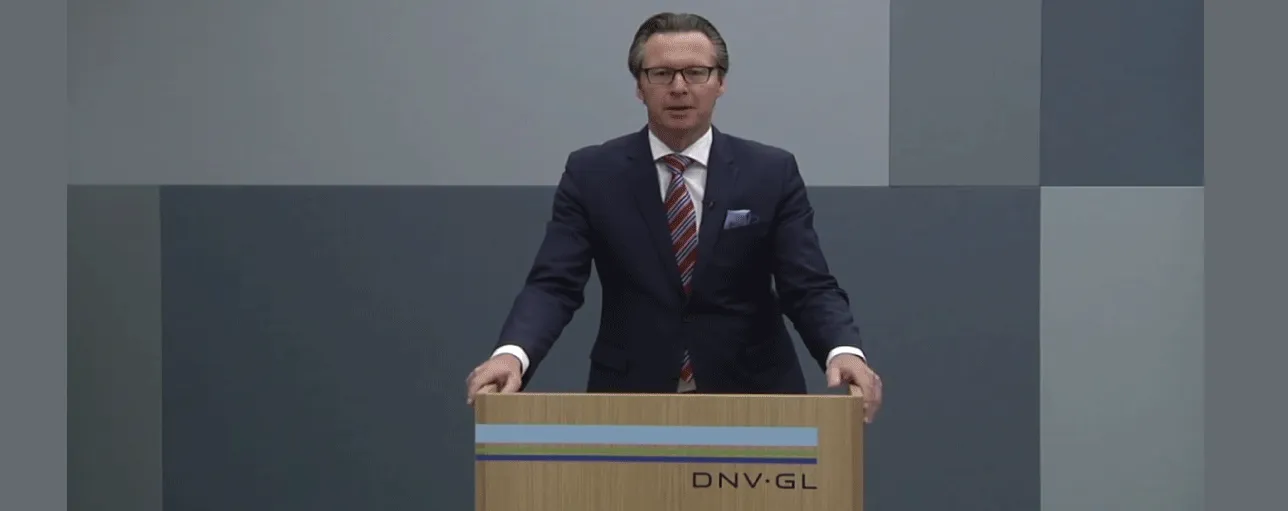With demand for information on market developments at its highest, DNV GL delivered vital insight on the transformation of the shipping industry and the pathway to decarbonization during the Capital Link 14th Annual International Shipping Forum - Digital Conference.
The global transformation of shipping
Knut Ørbeck-Nilssen, DNV GL Maritime CEO, delivered a keynote address during which he spoke about tackling global transformations and called for industry stakeholders to be open-minded to new opportunities, ways of working and different solutions heading into the new decade. While acknowledging that the COVID19 pandemic is currently impacting every facet of life, Ørbeck-Nilssen reminded participants that, “unpredictable market conditions, stricter regulations, and rapidly advancing technology-driven by digitalization were transforming the maritime industry before the global health crisis, and they will continue to shape it after the crisis subsides.”
Ørbeck-Nilssen stressed that the widespread uptake of alternative fuels, in addition to other measures like increasing energy efficiency, speed reduction and more effective logistics, will all be necessary for the industry to achieve the IMO’s 2050 targets for the reduction of greenhouse gas emissions (GHG).
“When it comes to fuels, it is important to act now and not wait for the ‘perfect’ fuel,” he stated. “While the size of a vessel, it’s operating profile, type of cargo, etc. are all factors taken into consideration when evaluating potential fuel alternatives for a particular vessel, DNV GL sees gas as the first large scale alternative fuel to initiate the needed change for the next one to two vessel generations.”
In closing, Ørbeck-Nilssen remarked that in this period, safety is more vital than ever and that the shipping industry is very much a people’s industry. “It is important that we continue to exchange, communicate and have a good dialogue about the industry, it’s future, it’s opportunities, and not just these days about the challenges,” he stated.” We must work collectively to safeguard life, property, and the environment.”
Navigating alternative fuels
Reducing GHG emissions from shipping is a challenging task. Representatives from a broad spectrum of industry stakeholders including investors, engine manufacturers, and a representative from DNV GL, discussed alternative future marine fuels, their status and challenges, key barriers to uptake, and the potential decarbonization pathways during the panel NAVIGATING THE WORLD OF ALTERNATIVE FUELS – THE ROADMAP AHEAD. The panelists agreed that there is no silver bullet to meeting the GHG emission targets.
“In the long-term, the industry needs to focus on fuel flexibility and bridging technologies that can facilitate the transition from the traditional fuel we are using today,” said panelist Jan Hagen Andersen, Business Development Manager at DNV GL. “Bridging technologies will enable a transition first to the mature technology of LNG or other alternative fuels which are readily available, and subsequently to fuels with lower carbon footprint later once the technology and logistics have developed.”
Panelists representing the major engine manufacturers MAN Energy Solutions and Wartsila discussed their views of two-stroke and four-stroke dual-fuel engines based on the experience of their companies, as well as investments and outlook for the future. Aaron Bresnahan, Vice President of Marine Business, Americas at Wartsila, highlighted that for manufacturers, it is more efficient to have few types of fuel. Yet, the reality is showing several different alternatives and it requires increased investment to cope with that. “A lesson learned over time is that a lot of decisions for changing fuels have been driven by economics,” said Bresnahan. “We know now based on the commitment of the IMO and other member nations that we are making a commitment not just based on the business case, but for the good of the planet. When you put in place these very high targets for compliance and regulatory development, that helps accelerate the investment in the technology and the change.”
Magnus Tangen, Vice President Commercial Development of the invest and infrastructure development group Clean Marine Energy, reflecting on the panel and his participation, commented, “There is immense opportunity in the space of alternative fuels investment, but the complexities are equally as great. The technical expertise of DNV GL and the insight of this panel session laid out nicely the roadmap to decarbonization. This was a valuable discussion for those making investment decisions, and they should understand better where capital can be best put to use in this space.”
In response, Andersen added, “The IMO 2050 GHG emission target is ambitious, but achievable with a collective industry effort. It is vital that all stakeholders understand the decarbonization roadmap and their role in facilitating the energy transition.”
Watch the video highlights of DNV GL at the Capital Link 14th Annual International Shipping Forum.
